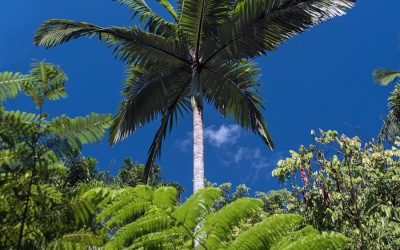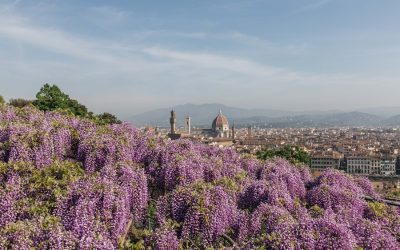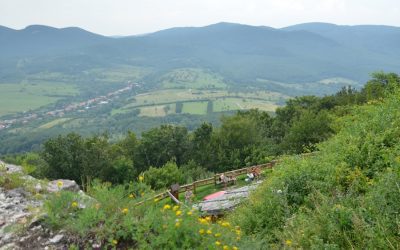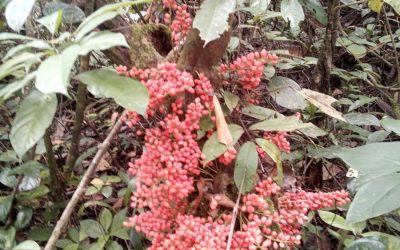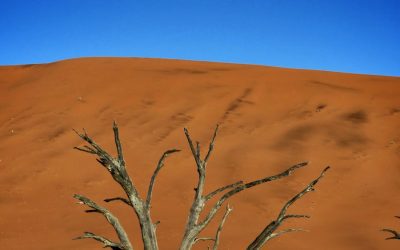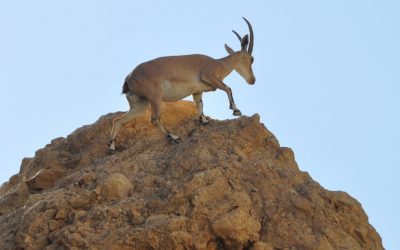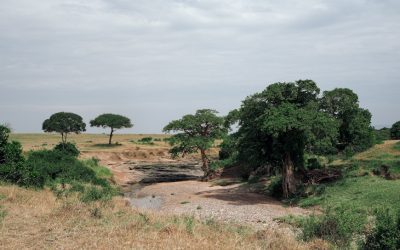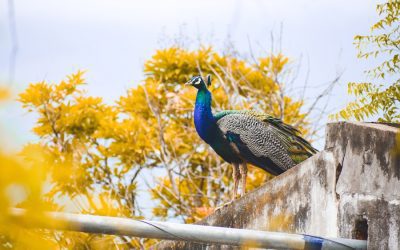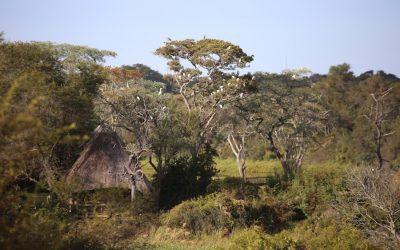World Geography
Geography is the study of the Earth’s landscapes, environments, and the relationships between people and their surroundings. It encompasses both the physical aspects of the Earth, such as its landforms, bodies of water, and climate, as well as the human aspects, including population distribution, cultures, and economies. World geography is a broad field that seeks to understand the complexities of our planet and how humans interact with it. By studying world geography, we can gain a deeper appreciation for the diversity of our planet and the interconnectedness of its various regions.
Geography is a multidisciplinary field that draws on elements of physical science, social science, and humanities. It involves the use of maps, spatial analysis, and geographic information systems (GIS) to understand the Earth’s surface and the processes that shape it. World geography also encompasses the study of human geography, which examines the ways in which people and their activities are distributed across the Earth. By understanding world geography, we can better appreciate the environmental, cultural, and economic challenges facing different regions of the world. This knowledge is crucial for addressing global issues such as climate change, resource management, and international development.
The Five Oceans and Seven Continents
The Earth’s surface is divided into five major oceans: the Pacific, Atlantic, Indian, Southern (or Antarctic), and Arctic Oceans. These vast bodies of water play a crucial role in regulating the Earth’s climate and supporting diverse marine ecosystems. The oceans also serve as important transportation routes and a source of food and other natural resources for human societies around the world.
In addition to the oceans, the Earth’s landmasses are divided into seven continents: Africa, Antarctica, Asia, Europe, North America, Australia (or Oceania), and South America. Each continent has its own unique physical and cultural characteristics, shaped by millions of years of geological processes and human history. From the deserts of Africa to the rainforests of South America, the continents offer a rich tapestry of landscapes and environments for exploration and study.
Major Mountain Ranges and Deserts
The Earth’s surface is also marked by major mountain ranges and deserts that have shaped the planet’s physical and cultural landscapes. The Himalayas, for example, are the highest mountain range in the world and are home to diverse ecosystems and cultures in countries such as India, Nepal, and Bhutan. The Andes in South America, the Rockies in North America, and the Alps in Europe are other prominent mountain ranges that have influenced human settlement patterns and economic activities.
Deserts cover about one-third of the Earth’s land surface and are characterized by low precipitation and extreme temperatures. The Sahara Desert in Africa is the largest hot desert in the world, while the Gobi Desert in Asia is one of the largest cold deserts. Deserts are not only home to unique flora and fauna but have also been important trade routes and cultural crossroads throughout history.
Climate Zones and Biomes
The Earth’s climate is influenced by a variety of factors, including latitude, altitude, ocean currents, and prevailing winds. As a result, the planet is divided into different climate zones, each with its own characteristic weather patterns and ecosystems. The equator, for example, experiences a tropical climate with high temperatures and heavy rainfall, while the polar regions have a cold and dry climate.
These climate zones give rise to different biomes, or large ecological areas characterized by distinct plant and animal communities. The tropical rainforest biome, found near the equator, is home to a diverse array of species and is vital for regulating the Earth’s climate. The grasslands biome, found in regions such as the African savannah and North American prairies, supports grazing animals and has been important for human agriculture throughout history.
Human Geography and Population Distribution
Human geography examines the ways in which people and their activities are distributed across the Earth’s surface. It encompasses topics such as population growth, migration patterns, urbanization, and cultural diversity. Understanding human geography is crucial for addressing global challenges such as poverty, inequality, and environmental degradation.
Population distribution is uneven across the world, with some regions experiencing rapid population growth while others are declining. The majority of the world’s population lives in Asia, particularly in countries such as China and India. Urban areas are also growing rapidly, with more than half of the world’s population now living in cities. This trend has significant implications for infrastructure development, resource management, and social inequality.
Historical and Cultural Geography
Historical geography examines how human activities have shaped the Earth’s landscapes over time. It explores topics such as colonialism, trade routes, and the rise and fall of empires. Cultural geography focuses on how human cultures have developed in different regions of the world and how they interact with their environments.
The Silk Road, for example, was an ancient trade route that connected China with Europe and facilitated the exchange of goods, ideas, and technologies across Eurasia. This historical trade route had a profound impact on the development of cultures and economies along its path. Similarly, cultural geographers study how different societies have adapted to their environments through practices such as agriculture, architecture, and religious beliefs.
The Importance of Geographic Knowledge
Geographic knowledge is crucial for addressing global challenges such as climate change, resource management, and international development. By understanding world geography, we can better appreciate the environmental, cultural, and economic challenges facing different regions of the world. This knowledge is crucial for addressing global issues such as climate change, resource management, and international development.
Geographic knowledge also helps us to understand our interconnectedness with other regions of the world. By studying world geography, we can gain a deeper appreciation for the diversity of our planet and the interconnectedness of its various regions. This understanding can foster a sense of global citizenship and empathy for people from different cultures and backgrounds.
In conclusion, world geography is a complex and multifaceted field that encompasses both physical and human aspects of the Earth’s landscapes. By studying world geography, we can gain a deeper appreciation for the diversity of our planet and the interconnectedness of its various regions. This knowledge is crucial for addressing global challenges such as climate change, resource management, and international development. It also helps us to understand our interconnectedness with other regions of the world and fosters a sense of global citizenship.
FAQs
What is world geography?
World geography is the study of the Earth’s landscapes, environments, and the relationships between people and their environments. It encompasses the physical features of the Earth, as well as the human activity that takes place on it.
Why is world geography important?
World geography is important because it helps us understand the world around us. It provides insights into the physical and human processes that shape our planet, and helps us make informed decisions about how to interact with our environment.
What are the main branches of world geography?
The main branches of world geography include physical geography, which focuses on the Earth’s natural features and processes, and human geography, which examines the relationships between people and their environments.
How does world geography impact our daily lives?
World geography impacts our daily lives in numerous ways, from influencing the weather and climate we experience, to shaping the availability of natural resources and influencing the distribution of populations and cultures around the world.
What are some key concepts in world geography?
Key concepts in world geography include location, place, human-environment interaction, movement, and region. These concepts help geographers understand and interpret the world around them.
Discovering the Biodiversity of New Caledonia: The Flora and Fauna
New Caledonia, an archipelago located in the southwest Pacific Ocean, is a French territory renowned for its stunning natural beauty and rich cultural heritage. Comprising the main island of Grande Terre, along with several smaller islands, New Caledonia is situated approximately 1,200 kilometres east of Australia. The region is characterised by its diverse landscapes, which range from lush rainforests and rugged mountains to pristine beaches and coral reefs. This geographical diversity contributes to the unique ecosystems that thrive within its boundaries, making New Caledonia a hotspot for biodiversity. The indigenous Kanak people have inhabited New Caledonia for thousands of years, and their culture is deeply intertwined with the land and its resources. The territory’s colonial history has also shaped its identity, leading to a blend of indigenous and European influences. Today, New Caledonia is not only a place of natural wonder but also a living testament to the resilience and richness of its cultural tapestry. As a result, it attracts researchers, ecologists, and tourists alike, all eager to explore its unique offerings. Summary New Caledonia is a French territory located in the southwest Pacific Ocean, known for its rich biodiversity and unique ecosystems. The flora of New Caledonia is incredibly diverse, with a high percentage of endemic species found only on the island. The fauna of New Caledonia is equally diverse, with a wide range of unique and endemic species, including the famous New Caledonian crested gecko. New Caledonia is home to a large number of endemic species, meaning they are found nowhere else in the world, making it a globally important biodiversity hotspot. Despite its rich biodiversity, New...
Exploring Italy’s Rich Flora and Fauna
Italy is a country renowned for its rich cultural heritage, but it is equally remarkable for its diverse ecosystems that span across its varied landscapes. From the snow-capped peaks of the Alps in the north to the sun-drenched Mediterranean coasts in the south, Italy’s geographical diversity fosters a multitude of habitats. The Apennine mountain range, which runs down the spine of the country, creates distinct climatic zones that support a wide array of flora and fauna. The northern regions, characterised by their alpine meadows and glacial lakes, are home to species such as the chamois and the golden eagle, while the coastal areas boast unique marine ecosystems teeming with life. In addition to mountainous terrains and coastal regions, Italy’s extensive river systems, such as the Po and the Arno, contribute to its ecological variety. Wetlands and marshes found in areas like the Po Delta provide critical habitats for numerous bird species, including herons and flamingos. The Mediterranean scrubland, known as maquis, is another significant ecosystem that thrives in Italy’s warmer regions, supporting a plethora of plant species adapted to dry conditions. This ecological mosaic not only enhances Italy’s natural beauty but also plays a crucial role in maintaining biodiversity and ecological balance. Summary Italy boasts a diverse range of ecosystems, including mountains, forests, wetlands, and coastal areas, providing habitats for a wide variety of flora and fauna. The country is home to several endangered species, such as the Italian wolf, the Sardinian deer, and the loggerhead sea turtle, highlighting the need for conservation efforts. Italy’s unique flora includes the iconic Mediterranean cypress, the vibrant oleander, and the delicate Italian...
Exploring Dominica’s Rich Flora and Fauna
Dominica, often referred to as the “Nature Island” of the Caribbean, is a treasure trove of biodiversity that captivates scientists, ecologists, and nature enthusiasts alike. This small island nation, located between the French territories of Guadeloupe and Martinique, boasts a unique combination of lush rainforests, volcanic landscapes, and a rich array of ecosystems. The island’s geographical isolation has fostered the development of a diverse range of flora and fauna, many of which are found nowhere else on Earth. The interplay of its mountainous terrain, varying altitudes, and microclimates contributes to the remarkable variety of habitats that support an extensive range of species. The significance of Dominica’s biodiversity extends beyond its aesthetic appeal; it plays a crucial role in maintaining ecological balance and supporting local communities. The island’s ecosystems provide essential services such as water purification, soil fertility, and carbon sequestration. Furthermore, the rich biological heritage is integral to the cultural identity of the Dominican people, who have long relied on their natural surroundings for sustenance, medicine, and spiritual practices. As global awareness of environmental issues grows, understanding and preserving Dominica’s biodiversity has become increasingly important, not only for the island itself but also for the broader Caribbean region. Summary Dominica is home to a rich and diverse range of flora and fauna, making it a hotspot for biodiversity in the Caribbean. The unique flora of Dominica includes over 1,200 species of flowering plants, including many rare and endemic species. Dominica’s diverse fauna includes a variety of bird species, reptiles, amphibians, and marine life, making it a paradise for nature enthusiasts. The island is home to many endemic species, including...
Discovering Bulgaria’s Rich Flora and Fauna
Bulgaria, a small yet ecologically rich country located in Southeast Europe, is renowned for its remarkable biodiversity. Nestled at the crossroads of various climatic and geographical influences, Bulgaria boasts a unique blend of ecosystems that support a wide array of flora and fauna. The country’s varied topography, which includes mountains, plains, rivers, and coastlines, creates distinct habitats that are home to numerous species. This rich tapestry of life is not only significant for ecological balance but also plays a crucial role in the cultural and economic fabric of the nation. The importance of biodiversity in Bulgaria extends beyond mere numbers; it encompasses the intricate relationships between species and their environments. The country is part of the European Union’s Natura 2000 network, which aims to protect the most valuable habitats and species across Europe. Bulgaria’s commitment to preserving its natural heritage is evident in its numerous protected areas, national parks, and reserves. However, the ongoing challenges posed by human activity and climate change threaten this delicate balance, making it imperative to understand and appreciate the wealth of biodiversity that Bulgaria harbours. Summary Bulgaria boasts a rich and diverse biodiversity, with a wide range of ecosystems and endemic species. From the lush forests of the Rhodope Mountains to the unique wetlands of the Danube River, Bulgaria offers a variety of ecosystems to explore. Bulgaria is home to a number of endemic species of flora and fauna, including the Bulgarian fir and the Balkan chamois. Threats to Bulgaria’s biodiversity include habitat loss, pollution, and climate change, which are putting pressure on the country’s unique ecosystems and species. Conservation efforts and the establishment...
Exploring the Flora and Fauna of Bangladesh
Bangladesh, a small yet vibrant country located in South Asia, is often celebrated for its rich cultural heritage and historical significance. However, it is equally important to recognise its remarkable biodiversity, which is a treasure trove of unique flora and fauna. Nestled between the mighty Himalayas and the vast Bay of Bengal, Bangladesh boasts a variety of ecosystems that support an incredible array of species. The geographical diversity, ranging from lush forests and wetlands to coastal mangroves, creates a habitat for numerous organisms, many of which are endemic to the region. The biodiversity of Bangladesh is not merely a backdrop to its human activities; it plays a crucial role in the livelihoods of millions. The country’s natural resources provide food, medicine, and materials for shelter, while also supporting agriculture and fisheries. The Sundarbans, the largest mangrove forest in the world, is a prime example of how biodiversity sustains local communities. However, this wealth of natural heritage faces significant threats from climate change, deforestation, and urbanisation. Understanding and appreciating the biodiversity of Bangladesh is essential for fostering conservation efforts and ensuring the sustainability of its ecosystems. Summary Bangladesh is home to a rich and diverse range of flora and fauna, making it a hotspot for biodiversity. The diverse flora of Bangladesh includes a wide variety of plants, trees, and flowers, with many species unique to the region. The rich fauna of Bangladesh includes a diverse range of mammals, birds, reptiles, and amphibians, with many endangered species in need of conservation efforts. Unique ecosystems in Bangladesh, such as the Sundarbans mangrove forest and the Sylhet tropical rainforest, provide vital habitats for...
Exploring the Rich Flora and Fauna of Namibia
Namibia, a country located in the southwestern region of Africa, is renowned for its remarkable biodiversity, which encompasses a wide array of ecosystems ranging from arid deserts to lush wetlands. The country is home to an impressive variety of flora and fauna, many of which are endemic to the region. This unique biodiversity is largely attributed to Namibia’s diverse climatic conditions, geological formations, and varying altitudes. The Namib Desert, one of the oldest deserts in the world, plays a significant role in shaping the ecological landscape, providing a habitat for specially adapted species that thrive in extreme conditions. The rich tapestry of life in Namibia is not only a source of national pride but also a vital component of the global ecosystem. The country’s commitment to conservation and sustainable practices has garnered international attention, making it a model for biodiversity preservation. With over 4,000 plant species, 650 bird species, and numerous mammals, reptiles, and amphibians, Namibia’s biodiversity is a treasure trove for researchers, conservationists, and nature enthusiasts alike. The interplay between its unique ecosystems and the species that inhabit them creates a dynamic environment that is both fragile and resilient. Summary Namibia boasts a rich and diverse biodiversity, with unique plant and animal species found in its varied landscapes. The country is home to a wide array of unique plant species, including the iconic quiver tree and the welwitschia plant, which can live for over 1,000 years. Namibia’s diverse animal life includes the famous desert-adapted elephants, black rhinos, and a variety of antelope species, making it a prime destination for wildlife enthusiasts. Conservation efforts in Namibia have been successful,...
Exploring the Flora and Fauna of Iceland
Iceland, often referred to as the “Land of Fire and Ice,” boasts a remarkable and diverse ecosystem shaped by its unique geological features and climatic conditions. This Nordic island nation, located in the North Atlantic Ocean, is characterised by its volcanic landscapes, glacial formations, and geothermal activity. The interplay of these elements creates a habitat that supports a variety of life forms, both terrestrial and marine. The stark contrasts between the rugged mountains, expansive lava fields, and lush valleys contribute to an environment that is not only visually stunning but also ecologically significant. The isolation of Iceland has played a crucial role in the development of its ecosystem. With a relatively small human population and limited agricultural practices, many areas remain untouched by urbanisation. This pristine environment allows for the preservation of unique habitats that are home to a range of species, some of which are found nowhere else on Earth. The combination of harsh weather conditions, including long winters and short growing seasons, has led to the evolution of resilient flora and fauna that have adapted to survive in this challenging landscape. Summary Iceland’s unique ecosystem is home to a diverse range of flora and fauna, making it a fascinating destination for nature enthusiasts. The flora of Iceland includes a variety of mosses, lichens, and wildflowers, adapted to the harsh Arctic climate. Iceland’s fauna is characterized by its birdlife, with species such as puffins, Arctic terns, and eider ducks thriving in the country’s coastal areas. Endemic species in Iceland, such as the Icelandic sheepdog and the Icelandic horse, are a testament to the country’s isolated and distinct wildlife....
Exploring the Wildlife of Djibouti: The Flora and Fauna
Djibouti, a small yet strategically located nation in the Horn of Africa, is often overshadowed by its more prominent neighbours. However, this arid country boasts a remarkable array of wildlife and ecosystems that are both unique and diverse. The geographical positioning of Djibouti, bordered by the Red Sea and the Gulf of Aden, creates a rich tapestry of habitats ranging from coastal areas to volcanic landscapes and arid deserts. This variety supports a plethora of species, some of which are endemic to the region, making Djibouti a hidden gem for wildlife enthusiasts and researchers alike. The wildlife of Djibouti is not only significant for its biodiversity but also for its cultural and ecological importance. The interplay between the harsh climate and the unique geological features has led to the evolution of species that have adapted to survive in extreme conditions. From the rugged mountains of the Goda Mountains to the saline lakes of Lake Assal, Djibouti’s wildlife reflects the resilience of nature. This article delves into the unique flora and fauna of Djibouti, conservation efforts, and opportunities for ecotourism, highlighting the importance of preserving this natural heritage. Summary Djibouti is home to a diverse range of wildlife, making it a unique destination for nature enthusiasts. The flora of Djibouti includes rare and endemic species adapted to the country’s arid climate. Djibouti’s fauna is diverse, with species such as the endangered Grevy’s zebra and the charismatic Somali wild ass. Conservation efforts in Djibouti aim to protect and preserve the country’s rich biodiversity. Birdwatching in Djibouti offers the opportunity to spot a variety of migratory and resident bird species in diverse...
Exploring the Flora and Fauna of Burkina Faso
Burkina Faso, a landlocked country in West Africa, is often overlooked in discussions about biodiversity, yet it boasts a rich tapestry of ecosystems that are home to a remarkable variety of flora and fauna. The nation’s geographical position, straddling the Sahel and savannah regions, creates a unique environment that supports diverse habitats ranging from grasslands to woodlands. This ecological diversity is not only vital for the survival of numerous species but also plays a crucial role in the livelihoods of local communities who depend on these natural resources for their sustenance and cultural practices. The biodiversity of Burkina Faso is shaped by its climatic conditions, which include a distinct wet and dry season. The annual rainfall varies significantly across the country, influencing the types of vegetation and animal life that can thrive in different regions. The interplay between human activity and natural ecosystems further complicates this landscape, as agriculture, deforestation, and urbanisation exert pressure on wildlife and plant species. Understanding the intricate relationships within this biodiversity is essential for fostering sustainable practices that can protect these invaluable resources for future generations. Summary Burkina Faso is home to a rich and diverse range of flora and fauna, making it a hotspot for biodiversity in West Africa. The unique flora of Burkina Faso includes a variety of indigenous plants, such as the iconic baobab tree and the shea tree, which are of great cultural and economic importance. The diverse fauna of Burkina Faso includes a wide range of mammals, birds, reptiles, and insects, with species such as elephants, hippos, and crocodiles found in the country’s national parks and reserves. Conservation efforts...
Exploring the Wildlife of Bonaire, Sint Eustatius and Saba
Bonaire, Sint Eustatius, and Saba, collectively known as the Caribbean Netherlands, are three small islands that boast a rich tapestry of natural beauty, cultural heritage, and ecological significance. Located in the Leeward Antilles, these islands are part of the Kingdom of the Netherlands and are renowned for their stunning landscapes, vibrant marine ecosystems, and unique wildlife. Each island possesses its own distinct character and charm, making them a treasure trove for nature enthusiasts, adventure seekers, and those looking to immerse themselves in the tranquillity of island life. Bonaire is celebrated for its exceptional diving opportunities and pristine coral reefs, while Sint Eustatius, often referred to as Statia, is known for its historical significance and lush landscapes. Saba, the smallest of the three, is characterised by its dramatic volcanic terrain and rich biodiversity. Together, these islands offer a unique blend of experiences that highlight the importance of conservation and sustainable tourism in preserving their natural wonders. As we delve deeper into the diverse ecosystems and wildlife that inhabit these islands, we will uncover the intricate relationships between their inhabitants and the ongoing efforts to protect these precious environments. Summary Bonaire, Sint Eustatius and Saba are three unique islands in the Caribbean Netherlands, each offering diverse wildlife and natural beauty. Bonaire’s waters are home to a rich and diverse marine life, making it a paradise for snorkelers and divers. Sint Eustatius is a haven for bird watchers, with over 200 species of birds to be spotted on the island. Saba is known for its unique wildlife, including the Saba Anole lizard and the Saba racer snake, found nowhere else in the...
Exploring the Flora and Fauna of Sweden
Sweden is a country characterised by its remarkable diversity of ecosystems, which range from coastal areas and archipelagos to vast forests and mountainous regions. The geographical layout of Sweden, with its extensive coastline along the Baltic Sea and the Gulf of Bothnia, creates a unique interplay between land and water. This coastal environment supports a variety of habitats, including sandy beaches, rocky shores, and rich marine ecosystems. The archipelago of Stockholm, for instance, comprises over 30,000 islands, each hosting distinct flora and fauna adapted to the varying conditions of salinity and exposure to the elements. Moving inland, Sweden’s landscape transitions into expansive boreal forests, which cover approximately 60% of the country. These forests are predominantly composed of coniferous trees such as pine, spruce, and fir, interspersed with deciduous species like birch and aspen. The boreal forest is not only a vital carbon sink but also a habitat for numerous species. The undergrowth is rich with mosses, lichens, and a variety of shrubs that provide food and shelter for wildlife. In the northern regions, the landscape shifts to tundra, where harsh climatic conditions limit vegetation to hardy species like reindeer lichen and dwarf shrubs. This ecological diversity is crucial for maintaining the balance of Sweden’s natural environment and supports a wide array of wildlife. Summary Sweden’s diverse ecosystems include forests, mountains, wetlands, and coastal areas, providing a rich variety of habitats for flora and fauna. Unique species such as the European brown bear, moose, and Arctic fox can be found in Sweden, along with a wide range of plant species including the rare twinflower and the Lapland buttercup. Sweden’s national...
Exploring the Rich Flora and Fauna of Mozambique
Mozambique, a country located on the southeastern coast of Africa, is renowned for its rich and diverse biodiversity. Spanning over 800,000 square kilometres, the nation boasts a variety of ecosystems, including coastal mangroves, savannahs, wetlands, and mountainous regions. This ecological diversity is home to an array of flora and fauna, some of which are endemic to the region. The country’s unique geographical position, bordered by the Indian Ocean to the east and featuring a range of climatic zones, contributes significantly to its biological wealth. Mozambique’s biodiversity is not only vital for the environment but also plays a crucial role in the livelihoods of local communities who depend on natural resources for their sustenance. The intricate web of life in Mozambique is a testament to the evolutionary processes that have shaped the region over millennia. The country is part of the Eastern African biodiversity hotspot, which is characterised by high levels of endemism and species richness. This hotspot includes various ecosystems that support a multitude of species, many of which are yet to be studied thoroughly. The importance of Mozambique’s biodiversity extends beyond its borders; it contributes to global ecological health and offers potential benefits in terms of medicine, agriculture, and climate resilience. As such, understanding and preserving this biodiversity is essential for both local and global communities. Summary Mozambique is home to a rich and diverse range of plant and animal species, making it a hotspot for biodiversity. The country boasts a number of unique plant species, including the iconic baobab tree and the delicate orchid species found in the region. Mozambique’s wildlife is incredibly diverse, with a wide...
